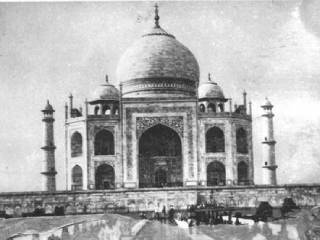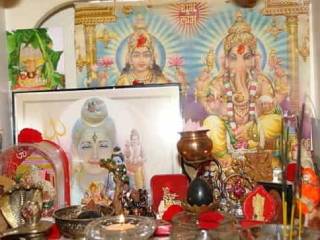Bhadrapad Krushna Ashtami Kaliyug Varsha 5112
By: Swapan Dasgupta
The appeal by the Union Cabinet to all Indians to exercise restraint and keep the peace after the Allahabad High Court delivers its long-overdue verdict in the Ram Janmabhoomi-Babri Masjid dispute was a necessary pre-emptive measure.
Such an appeal may well be pro forma but it does send out a signal to the country to take the verdict in its stride.
It is equally reassuring that the two main parties to the dispute have actually pre-empted this call for calm. The RSS chief has indicated that his parivar, which includes the VHP and the wild Bajrang Dal, will be guided by strict constitutionalism, and the various Muslim bodies have advised members of the community to refrain from either celebrations or assertions of victimhood.
It is possible that the extremist fringe in both communities will not be moved by the calls of the leadership and emulate the stone-pelting delinquents in the Kashmir Valley, but as long as the unruliness remains localised and without wider community support, it should be possible for any purposeful administration to control the hotheads.
On the face of it, there are only two sides of the dispute: Those who want to construct a grand temple on the site they believe is the exact birthplace of the epic hero Ram, and those who want to restore the place to its pre-1949 status of a mosque.
As far as the judicial process is concerned, this binary divide is valid. However, in a wider social and political sense, the dispute has also been cluttered by the interventions of what Pope Benedict XVI described last week as the very distasteful “aggressive forms of secularism”.
Of course, what the Pope had in mind in the context of Europe was a variety of macho atheism that does not exist in a meaningful way in India. The “aggressive forms of secularism” in India have come packaged in the guise of rootless modernity.
Found mainly in the rarefied enclaves of the English language media, history and sociology departments of universities and internationally-connected NGOs, rootless modernism proceeds on the premise of inherent cultural and intellectual superiority.
Though this section occasionally falls back on quotations from Mahatma Gandhi, the Upanishads and the rhythmic excitement of Sufi music and Baul songs — all items of favourable currency in trendy, avant garde circles — their intellectualism is aimed at establishing a separation from both the ‘great unwashed’ and the nouveau.
Wilfully giving offence to the mass of believers or simply mocking them is the signature tune of aesthetic superiority. Since organised Islam tends to be extra prickly in viewing both blasphemy and disrespect — witness the harassment of Salman Rushdie, Taslima Nasreen and the Danish cartoonist — impetuous modernists have concentrated their ire on popular Hinduism.
Some of this derision, particularly when directed at charlatan godmen and cruel practices that discriminate against women and ‘lower’ castes, is richly deserved. The problem lies not in the criticism or even denunciations but in the tone of the assault.
Public memory being short, not too many people may recall the seminal contribution of India’s modernist elite to vitiating the atmosphere and triggering a vicious and often unpalatable Hindu backlash.
It began with the disingenuous denial and justification of vandalism by medieval Muslim rulers — a process that led to the dishonest rewriting of Indian history. It continued along this path with political interventions that were not merely insensitive but positively inflammatory.
The Ram devotees were asked to produce a birth certificate testifying that the figure they venerated actually existed; the dispute over the religious antiquity of the disputed site was sought to be settled by a show of hands in the Indian History Congress;
a Left ideologue argued that Ram was chosen over Krishna and Shiva for ‘liberation’ because he was ‘upper’ caste; another Left activist was reported as saying that the disputed site should be converted into a non-denominational, public urinal; and, a cultural organisation linked to the CPI(M) organised an exhibition highlighting some obscure belief that Sita was actually Ram’s sister.
To believe that these were maverick voices comparable to some of the hurtful ballads popularised by some itinerant Bhojpuri singers who appeared in local VHP programmes is to create a false equivalence.
The ‘underground’ cassettes and histories sold in the narrow lanes of Hindu temple towns such as Ayodhya were truly fringe: Their creators never figured in mainstream discourse and never got invited to the interminable seminars on the subject.
The secular modernists were different. They tried to steer the debate into another direction by a campaign of mockery and derision which included posters saying, “Sharam se kaho hum Hindu hain.
” To my mind, their smug condescension and haughtiness were significant factors in triggering Hindu anger in the late-1980s and early-1990s and, indeed, preventing a negotiated settlement. The Ayodhya explosion had a strong anti-elitist bias which stemmed from the fury of the outlanders.
The Government has appealed to Hindus and Muslims to show restraint and keep larger national interests in mind. But it is not the religious-minded who necessarily provoke each other.
A big threat to calm could come from the ‘cool’ secular-modernists (not least in the media) who believe that they have a monopoly right to give offence.
Source: Pioneer
Also See
 |
Hindu Genocide in Kashmir & Bangladesh
Online photo exhibition of Hindu genocide and temples destruction in Kashmir by local Muslims. Series of exhibitions being arranged. |
 |
Grave sins of Congress are driving India to doom!
Highest sins of the Congress which is taking the country to Hell and of all political parties who are doing nothing about it but just letting that happen ! |

 Mizoram: EC accepts Christians’ demand to defer counting on Sunday, but what if Hindus had made a similar demand?
Mizoram: EC accepts Christians’ demand to defer counting on Sunday, but what if Hindus had made a similar demand? Sign Petition : Immediately repeal the draconian and unconstitutional ‘The Waqf Act, 1995’
Sign Petition : Immediately repeal the draconian and unconstitutional ‘The Waqf Act, 1995’ Shriram : Sri Lanka’s saviour
Shriram : Sri Lanka’s saviour Why it is so cool to malign Hindu gods and goddesses, but it may not be that easy now
Why it is so cool to malign Hindu gods and goddesses, but it may not be that easy now Shocking Truth of Taj Mahal exposed by Late Pujya P. N. Oak
Shocking Truth of Taj Mahal exposed by Late Pujya P. N. Oak How are Hindus treated in states where they are in a minority?
How are Hindus treated in states where they are in a minority?